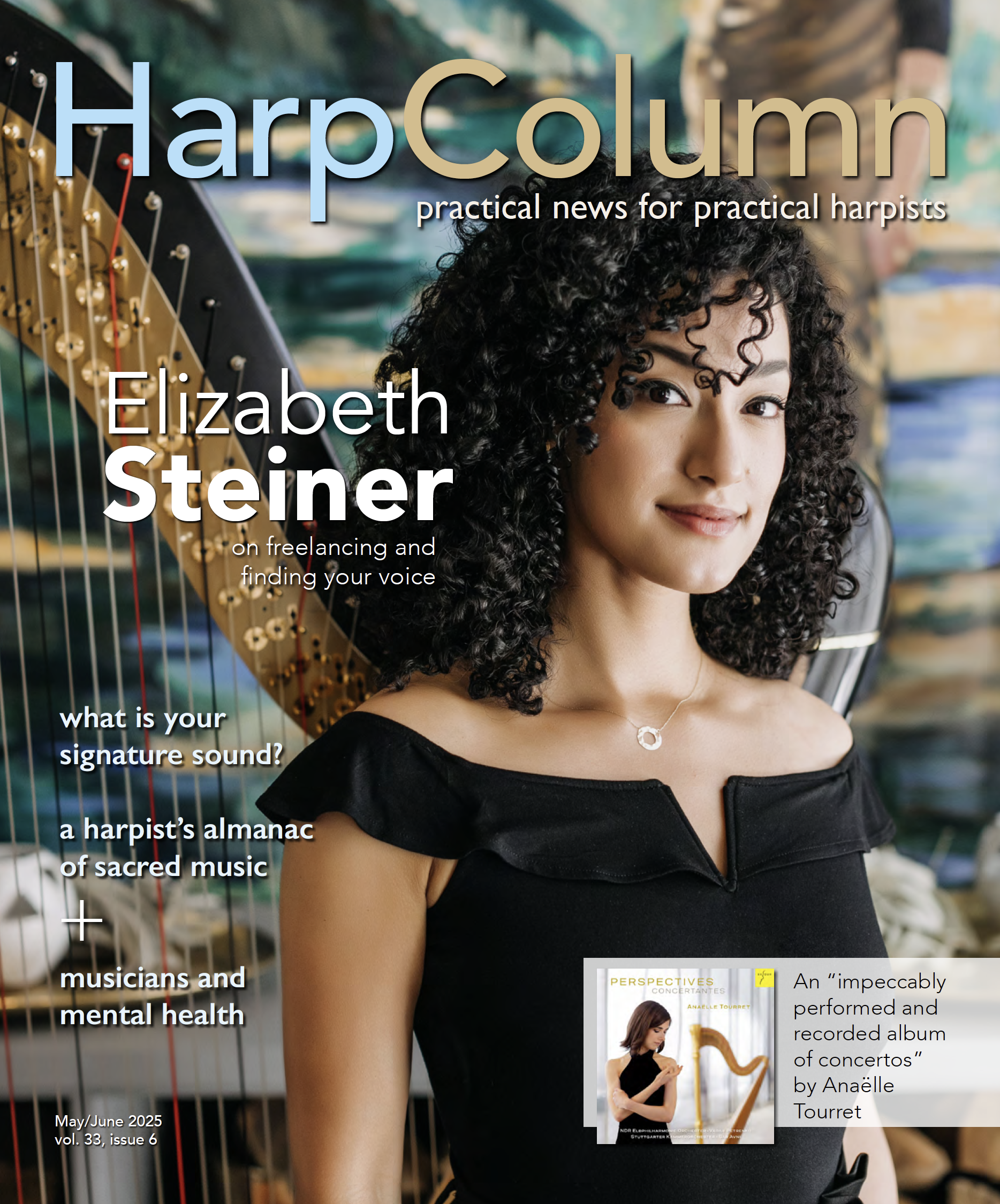Home › Forums › Forum Archives › Amateur Harpists › Not Enough Strings
- This topic has 12 replies, 7 voices, and was last updated 15 years, 3 months ago by
harpglo-jean.
-
AuthorPosts
-
February 21, 2010 at 5:06 pm #159358
Kay Meek
ParticipantI got a 29 string lever harp for Christmas and the octave range is from C-1 to C3 . So many pieces that I have found that I want to play have bass notes that aren’t on my harp. What should I do? I’ve tried playing the missing note an octave higher, but it doesn’t always sound right.
I’ve thought about tuning all of the strings down 5 half tones, but then I’d have to rethink where the other notes are. I also thought about just playing the piece an octave higher.
Getting another harp with more strings isn’t going to happen. I have to apologize to this one daily for my lack of skill.
KayFebruary 21, 2010 at 5:25 pm #159359barbara-brundage
ParticipantWell, really all you can do is to bump up the octave. You may find that sometimes it sounds better if you take the entire phrase in the bass up the octave (if it doesn’t collide with the melody) rather than just the particular note that lies below the range.
Moving the whole piece up an octave is also sometimes possible, although some things may sound plinky when you do that.
You really have to decide on a piece by piece basis.
Lowering the tuning on part of the harp is probably not the answer, IMHO.
February 21, 2010 at 5:26 pm #159360jennifer-buehler
MemberHow good at theory are you?
February 22, 2010 at 6:10 pm #159361jennifer-buehler
MemberAlso wanted to say that one of the current top composers for small harp is Harper Tasche.
February 22, 2010 at 7:54 pm #159362Rachel
ParticipantYou can do a lot with a 29-string harp, and you definitely do not want to tune your strings to notes not originally intended in the design.
February 23, 2010 at 3:42 am #159363Audrey Nickel
ParticipantIn addition to playing up an octave and/or collapsing 1,5,8 chords into triads, you can try:
1) Playing an inversion of the chord (experiment to see which inversion works best)
2) Making it into a two-finger chord (experiment to see which two notes in the chord sound best with the melody)
3) Just playing a single harmonizing note in place of a chord.
4) Leave it out entirely
5) Experiment with a coupled hands technique in that spot (while coupled hands is primarily a wire harp approach, it can sometimes work well for lever harps as well)
Play around with various options…what works best for one tune might not work well with another.
All three of my harps have only 26 strings (3 1/2 octaves: C to G), and I really haven’t found it all that limiting.
February 23, 2010 at 11:42 am #159364jennifer-buehler
MemberDepends on the teacher.
February 24, 2010 at 2:09 am #159365Audrey Nickel
ParticipantThat’s very true.
February 24, 2010 at 8:06 pm #159366Robin Dorer
ParticipantIs your harp new or used?
February 27, 2010 at 4:20 pm #159367Kay Meek
ParticipantThank you for your ideas, folks. I really appreciate your responses to my questions.
I think that I’ll try to getFebruary 27, 2010 at 6:08 pm #159368Audrey Nickel
ParticipantMost of the Sylvia Woods music books have arrangements that work well for small harps.
February 27, 2010 at 8:02 pm #159369jennifer-buehler
MemberMelody’s has a whole section of their catalog devoted to Lap or Small harp music at
February 27, 2010 at 9:46 pm #159370harpglo-jean
ParticipantAlso, Suzanne Guldimann’s music books are written specifically for small/lap harp.
-
AuthorPosts
- The forum ‘Amateur Harpists’ is closed to new topics and replies.





